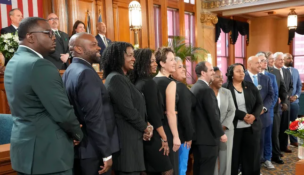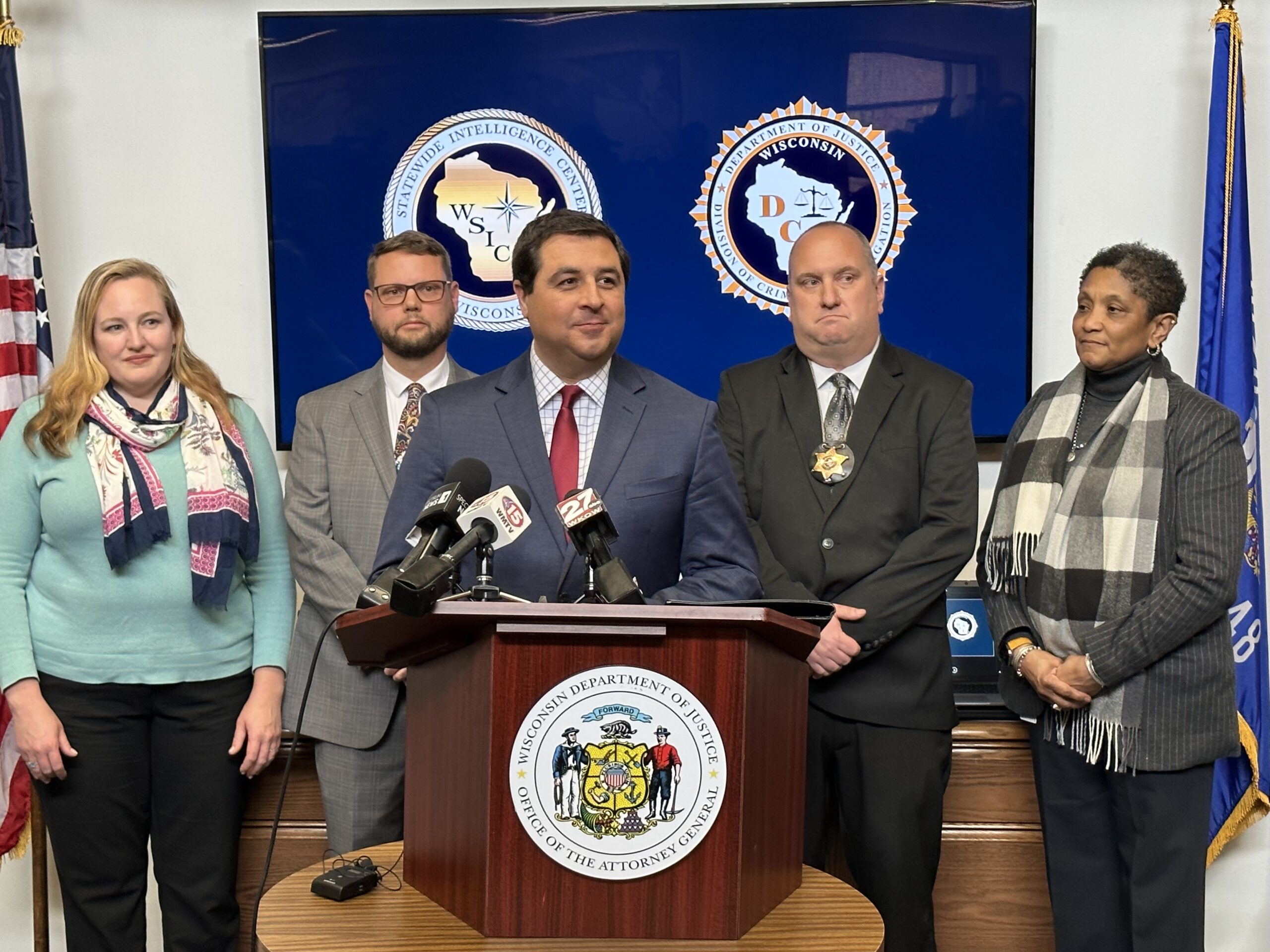Local rules conflict with state rules
By: dmc-admin//July 21, 2008//
In a landmark civil procedure case issued July 15, the Wisconsin Supreme Court voided all local rules that conflict with state statutes.
However, it tempered the rule somewhat by also holding that a circuit court need not state, on the record, its reasons for deviating from them. That holding overrules precedent from a Court of Appeals’ decision which required that the reasons be on the record. Hunter v. AES Consultants, Ltd, 2007 WI App 42, par. 15, 300 Wis.2d 213, 730 N.W.2d 184.
Writing for the court, Justice David T. Prosser explained, “Most [scheduling] conferences are informal and off the record. In an atmosphere of accommodation and agreement, there is no discernible need to go on the record to explain scheduling decisions that are not in complete conformity with state law.”
The court also held that, because a circuit court attached a conflicting local rule to a scheduling order, rather than including different time limits in the scheduling order itself, the order was void.
Local Rules
A dairy farmer, Jeannie Hefty, filed a negligence suit against a nutritionist, Daniel Strickhouser. The court sent the attorneys a scheduling questionnaire.
The court then entered a scheduling order. Regarding time limits for summary judgment briefs, the order referred the parties to an attached sheet containing Walworth County’s local court rules — which differ from the time limits set forth in sec. 802.08(2).
Strickhouser moved for summary judgment, but Hefty did not file a timely response under the local rules. As a result, the court struck the response, and entered summary judgment in favor of Strickhouser.
The Court of Appeals summarily reversed the order, and, in an opinion by Justice David T. Prosser, the Supreme Court affirmed the Court of Appeals, but on different grounds.
The basis for the Court of Appeals’ reversal was that the circuit court failed to state on the record its reasons for not using the time limits in sec. 802.08, relying on Hunter.
Incorrect Statement of Law
The Supreme Court, however, held that Hunter incorrectly states the law, and withdrew the language in Hunter requiring a court to state its reasons for deviation.
The court noted that sec. 802.10 explicitly allows circuit courts to enter its own scheduling order, provided the court “consults” with the attorneys.
Here, the circuit court sent a questionnaire to the attorneys regarding scheduling. The Supreme Court thus found that the court met its obligations under the statute to consult.
Given that scheduling conferences frequently occur off the record, with input from the parties, and opportunity to object, the court held, “There is no need for the court to go on the record to explain the fact that it deviated from a state rule to accommodate the needs of party A or to give party B the time to file a reply brief.”
However, the court concluded that, in this case, the court erroneously relied on the local rule to reject Hefty’s brief as tardy.
Prosser wrote, “Local rules may not be inconsistent with state rules or statutes. They may supplement state statutes and rules, but they may not supersede state statutes and rules (emphasis in original).”
Court Voids Rules
Because Walworth County’s local rules are inconsistent with sec. 802.08, the court held them void.
The court concluded, “Because the court’s scheduling order attempted to apply a void rule by attaching it to the order, the scheduling order’s deadline for responding to a motion for summary judgment was invalid.”
The court acknowledged that the circuit court could have imposed the exact same time limits for responding to a summary judgment motion by specifying the response time in the scheduling order itself; however, it could not merely attach an invalid rule.
Accordingly, the court held that the grant of summary judgment for Strickhouser was improper, and affirmed the Court of Appeals’ reversal of it.
Unreasonable Distinction
Justice Annette Kingsland Ziegler dissented. While she agreed with the majority opinion in almost all respects, she found the majority’s distinction between attaching local rules and incorporating them into the order itself unreasonable.
Ziegler wrote, “The majority’s conclusion that the motion practice must be specified in the order itself is a distinction without a difference. … It seems curious to conclude that if the order has the same information printed in a page that precedes the circuit court judge’s signature it is enforceable, but if the information appears on a clearly referenced attached sheet after the judge’s signature, it is unenforceable.”
That sentiment was echoed by Attorney Paul E. Benson, of Michael Best & Friedrich LLP, who represented Strickhouser.
“The upshot is the Supreme Court agreed with every single argument I advanced, but found that because the time limits were appended to the scheduling order rather than included in it, I lost the case,” Benson said in an interview.
Except for that one holding, Benson said it was an “extremely well-reasoned and correctly decided case.”
“I applaud the court for not requiring that litigants and courts go on the record after every scheduling conference. Had the court accepted that, it would have been terribly problematic.”
Benson said that the one way he could see to justify the court’s opinion is fear that unwary litigants will be trapped by conflicting rules.
Case analysis
The unfortunate result of the opinion is that it voids many local rules that are better than the statutory procedural rules that they displace.
For example, Milwaukee County is currently revising its local court rules.
Proposed Rule 3.15 would require that all motions for summary judgment be filed not less than 40 days before the hearing date; the nonmovant’s brief, not less than 25 days; and the reply brief, not less than 15.
Section 802.08(2) requires that the motion be served not less than 20 days before the hearing; the nonmovant’s response not less than 5. There is no provision at all for the movant’s reply brief.
Thus, the only upside of the holding is that it will be disregarded, and parties and courts will still use the local rules in practice.
In fact, Benson noted that, in 18 years of practice, only once has a circuit court actually employed the time limits set forth in sec. 802.08(2).
The proposed Rule 3.14 may also be void. It contains the same time requirements for motions to dismiss or for judgment on the pleadings, as apply to summary judgment.
However, sec. 802.06(3) only requires that such motions not delay the trial. Whether the proposed local rule supplements sec. 802.06(3), or conflicts with it, is debatable.
Again, the only feature about the court’s holding is that courts and parties may agree to whatever scheduling order they want.
Consider another proposed Milwaukee County rule, 1.15. It will require attorneys to make a good faith effort to resolve differences informally before filin
g a motion (dispositive motions, including motions to dismiss and for summary judgment, and motions to suppress are excepted).
Suppose a circuit court refused to hear a motion because no effort had been made to resolve it.
Arguably, the movant could seek a writ of mandamus in the Court of Appeals, seeking to compel the circuit court to decide the motion, contending that the local rule does not supplement state statutes, but conflicts with them.
That may sound far-fetched, but attorneys have been known to do worse things to complicate court proceedings.
Milwaukee County Circuit Court Judge Richard Sankovitz, who chairs the committee to revise the local rules, doesn’t expect anything to change, although he acknowledges that the rules are invalid, operating by themselves.
Proposed Rule 3.8 would direct the court, at the scheduling conference, to seek agreement by the parties to be bound by the local rules. Sankovitz stated that the civil courts have been doing this ever since Hunter was decided, and that the procedure has worked well.
Legal News
- Wisconsin Supreme Court justices question how much power Legislature should have
- Milwaukee’s Common Council now has the most African Americans, women and openly LGBTQ members ever
- Office of School Safety Provides Behavioral and Threat Assessment Management Training Ahead of 25th Anniversary of Columbine Shooting
- Wisconsin Supreme Court to hear arguments in Democratic governor’s suit against GOP-led Legislature
- Lawsuit asks Wisconsin Supreme Court to strike down governor’s 400-year veto
- Wisconsin man pleads not guilty to neglect in disappearance of boy
- ACS Selects University of Wisconsin Law School’s Miriam Seifter for 2024 Ruth Bader Ginsburg Scholar Award
- People with disabilities sue in Wisconsin over lack of electronic absentee ballots
- Wisconsin Republicans ignore governor’s call to spend $125M to combat ‘forever chemicals’
- Native American voices are finally factoring into energy projects
- Steven Avery prosecutor Ken Kratz admits ‘mistakes were made’
- Colombian national extradited to Milwaukee faces International narcotics-trafficking conspiracy charge
WLJ People
- Power 30 Personal Injury Attorneys – Russell Nicolet
- Power 30 Personal Injury Attorneys – Benjamin Nicolet
- Power 30 Personal Injury Attorneys – Dustin T. Woehl
- Power 30 Personal Injury Attorneys – Katherine Metzger
- Power 30 Personal Injury Attorneys – Joseph Ryan
- Power 30 Personal Injury Attorneys – James M. Ryan
- Power 30 Personal Injury Attorneys – Dana Wachs
- Power 30 Personal Injury Attorneys – Mark L. Thomsen
- Power 30 Personal Injury Attorneys – Matthew Lein
- Power 30 Personal Injury Attorneys – Jeffrey A. Pitman
- Power 30 Personal Injury Attorneys – William Pemberton
- Power 30 Personal Injury Attorneys – Howard S. Sicula











